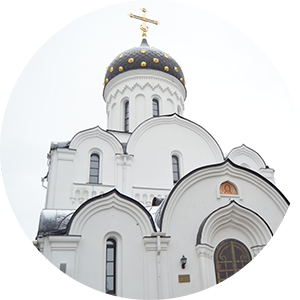An exhibition
that takes place in the Museum of Icons is for people, no matter how they read
the information – either with their eyes or with their hands. The exhibits are supposed
to be touched. If fact, you NEED to touch them.
The aim of the
exhibition is to tell people about the world of icon painting from the very
beginning, which is making paints, till the finished image.
The visitors
can see the mortars in which the icon painters pound the paints, the
paint-brushes with which they paint, and the boards on which icons are painted.
- The exhibition
includes also the materials from which icons are created – wood, ceramics,
alabaster, smalt and metals. – says Ekaterina Vasina, the head of the public
affairs office of the Museum of Icons.
- The tradition
of the relief icons is rather ancient. – said Alexey Lidov, an art historian, the
head of the Eastern Orthodox Culture research center, a member of the Russian Academy
of Art. – During the period of the early Christianity, there were even the
statues depicting Christ and the apostles. Later they were rejected because of
the fear of being accused of idolatry.
The icons
created with such a technique always existed in the Byzantine Empire. Concerning
the material, some of them were made of wood, but more often, it was either
marble or ivory. There was also a tradition of making icons of special wax
pasta – a mastic which reminds clay or playdough, in which a small particle
of relics was added. The material itself became sacred, and such an icon became
a great sacred image.
From the
viewpoint of our secular and sensuous sight, we need to become blind if we want
to perceive an icon for real. At the same time, there is no need to do this for
the blind. The only way for them to see an icon is to imagine it in their mind.
One of my
acquaintances, an iconographer, was bothered when she heard about icons for the
blind: “How can you touch a holy face! Isn’t this blasphemous?”
“No one, including
the Patriarchy, had no doubts about that. Every person has his own way of perceiving
the world and faith. If we forbid a person to touch the images, we can prevent
him from understanding art, from knowing faith and God. I do not think this is
right.” – said Ekaterina Vasina.
Moscow know-how
“We can say
that the exhibition of the relief images for blind people, organized by the
Museum of Icons, is a know-how. – says Alexey Lidov. – However, if we speak about
demonstration of other types of works for the blind, then we can say that
special exhibitions for them are organized in Europe since the 90s.
I have seen a
beautiful exposition, which took place in the Royal museum in Brussel and I
have noticed the influence it had on children. When I was there, a group of blind
children came. They were given various original works of art, such as an
ancient Egyptian statue, some works of ancient Greek plastic arts and so on. I
remember the look of joy and some kind of revelation on their faces, which transfigured
through that spiritual experience. They saw those works, but with a different
sight.
I would say
that the idea to share the art of icon painting with those who are blind deserves
to be commended. An icon as a piece of art is connected with the definition of
seeing. It is a mediator image, which joins two worlds together. This is why,
it is not just sight, contemplation of a plain picture, what plays an important
role in perceiving an icon, but some kind of communication with the image,
which brings the one who looks at it into a different world. The moment of
seeing which is available to the blind is quite strong in the art of icon painting.”
What next?
The organizers
are currently working on the audio accompaniment of the exhibition. Not all
blind people can read Braille. What is more, audio information can be useful for seeing visitors as well.
Another point
of the plan is to widen the exposition so that there will be more exhibits
which the visitors can touch. Next step – partially sighted children from
special schools will come to the Museum of Icons and have lessons there: not
only in the subjects, which are connected with religion and art, but in other
subjects as well. Children will have an opportunity to learn more about icons and to ask the staff of the museum any questions, which they will answer with
pleasure.
An excerpt Translation from: http://www.pravmir.ru/kak-delayut-ikony-dlya-slepyx-foto/





























CONVERSATION